- Lawn Turf
- Artificial
- Soil
- Timber
- Composite Decking
- Paving & Stone
Get In Touch With Our Experts Today!
Give us a Call! - Seed & Fertiliser
- Dressing
- Bark
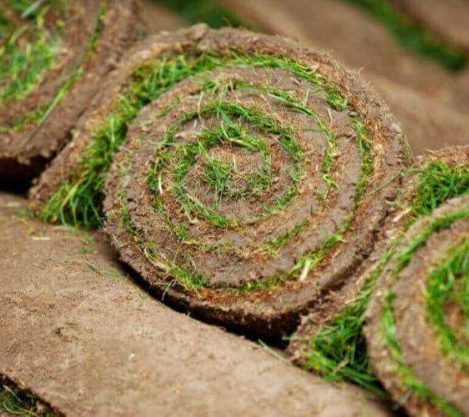
March 08, 2024
The George Davies Turf & Stone Buying Guide covers all the essential aspects of investing in real grass turf.
With 20+ years of experience in the industry, we have compiled our knowledge and expertise to provide you with a comprehensive guide that will help you make an informed decision when purchasing turf for your garden or commercial area.
Whether you’re reviving an existing lawn or establishing a new one, the key to success is determining the best choice of grass turf for your space.
Oh, and careful preparation, correct installation, and turf maintenance — but we’ll get to that later.
In this guide, we’ll discuss the different types of turf rolls in detail, so you can make a decisive decision.
You can view our full real turf range by following the link below, or continue through our guide to see what we recommend based on your project.
| Types of Turf | Best Uses | Key Features |
| Trident |
|
|
| Wildflower |
|
|
| Species-Rich |
|
|
| Greens |
|
|
| RTF |
|
|
| Shade-Tolerant |
|
|
| Clover |
|
|
Selecting the right turf for your specific needs is essential. Consider your local climate, soil type, maintenance requirements, and intended use for the lawn to help pick the right type of turf.
Turf is much more than just grass. There are many varieties, each with different species, care requirements, appearances, textures, and uses. So, before you choose your turf, you should learn a little about each.
Here’s a detailed breakdown of different turf types and their best uses:
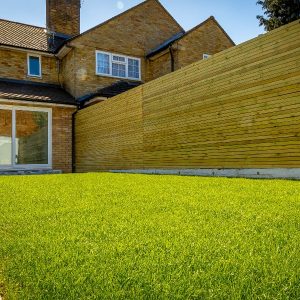
Trident Turf is a mix of 75% fescue and 25% rye. Fescue offers a fine texture and lush green colour, and rye grass is fast-growing and resilient. Together, they create a vibrant, low-maintenance lawn that establishes quickly and truly packs a punch in your garden.
Trident Turf is our best-selling turf for homeowners and landscapers throughout the UK. Not only is it grown by the experts, it’s used by them too.
It’s also weed-free and cultivated for up to 2 years before it even reaches you, so you know you’ll have a springy, healthy, luxurious lawn year after year.
As always, our turf is plastic-free. So, if you’re looking for an environmentally friendly, easily maintained, high-sward-density lawn for your back garden or professional allotment, choose Trident!
Best use:
|
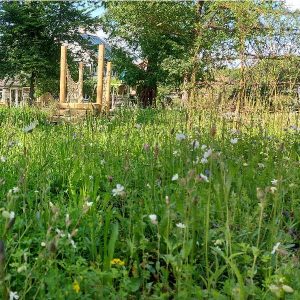
Wild Flower Turf contains 27 perennial and annual seeds that will flower and bloom throughout the summer, creating a biodiverse, ecologically rich garden environment.
The native wildflowers offer a natural look, attracting and supporting local wildlife, including important pollinators like bees and butterflies, small mammals, and birds. If you love being surrounded by the beauty of nature, a meadow-like garden is for you.
Learn When the Best Time is to Lay Wildflower Turf
This vibrant turf is also great at slowing soil erosion and acting as a natural canopy against the elements.
You might not think so, but this turf requires minimal maintenance; simply cut it twice a year. Creating a garden that would be Mother Nature-approved has never been easier.
Best use:
|
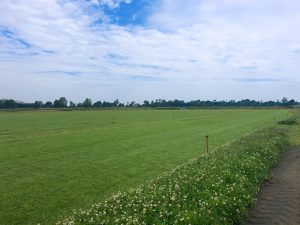
Species-Rich Turf contains grasses, wildflowers, and clovers, creating a textured and diverse landscape. Like our Wild Flower Turf, Species-Rich Turf undergoes seasonal changes as plant species bloom at various times.
Unlike traditional lawns, dominated by a single grass species, this turf aims to replicate the diversity found in natural grasslands and meadows.
This is one of our most popular choices for UK gardeners, landscapers, and designers, thanks to its middle ground between a formal striped lawn and untamed meadows.
You’ll reap the benefits of 27 annuals, perennials, and grasses, while having a natural-looking lawn from a distance, and it only requires mowing occasionally!
Best use:
|
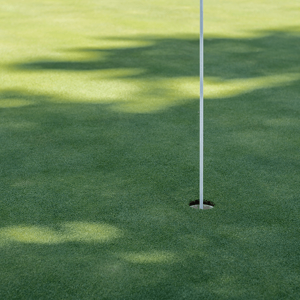
Greens Turf is carefully cultivated from fine-textured grass varieties, creating a velvety-looking, manicured, and uniform surface. The individual grass blades are often finer than those found in standard lawn varieties.
They are typically mowed to a very short height, usually much lower than what is suitable for traditional lawns. In fact, it’s a closer match to USGA specifications.
With its high sward density, you can trust that our turf will provide a smooth playing surface for your facility’s activities.
Our Greens Turf is a blend of browntop bent and fescue grass for excellent shoot density, tolerance, and disease resistance. These grasses require regular and skilled maintenance, making them ideal for facilities with groundskeepers.
Please note that Greens Turf is only available at certain times of the year due to its specialised nature. Please contact us for more details.
Best use:
|
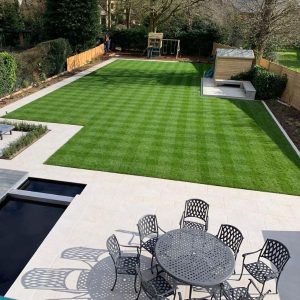
Buy Rhizomatous Tall Fescue Turf Rolls
Rhizomatous Tall Fescue (RTF) is known for its unique growth characteristics and resilience.
Unlike traditional tall fescue varieties, which are spread primarily through tillering (the production of side shoots from the base of the plant), RTF has the added ability to spread through rhizomes.
The presence of rhizomes (underground stems that can produce new shoots and roots) allows RTF to spread horizontally, creating a dense and interconnected turf.
We actually nickname this turf — ‘Trident Turf on steroids!‘
Due to its exceptional resilience, self-repair abilities, and highly durable properties, this turf performs excellently in hard-to-grow conditions like areas of drought or high footfall. It’s the perfect substitute for a plastic, artificial lawn.
Discover More Advantages of RTF Turf
Once established, you can pretty much leave it to its own devices, which is ideal if you’re looking for a low-maintenance lawn.
Best use:
|
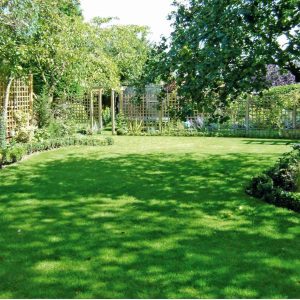
Buy the Best Shade-Tolerant Turf
Our Shade-Tolerant Turf is a blend of Trident Turf, which contains a mix of shady cultivars, and our Shady Seed Mixture. This blend results in a combination of grasses adapted to lower light conditions.
This turf absolutely thrives in minimal sunlight, so you can still benefit from a vibrant, healthy, fresh-looking lawn even if your garden is often shaded.
You’ll also find it can outcompete weeds, thrive in periods of drought, and naturally cover gaps for an even thicker lawn.
As long as it’s well-maintained, the Shade-Tolerant Turf will be an excellent addition to your shaded space.
Best use:
|
Download Our PDF Guide to the Perfect Lawn!
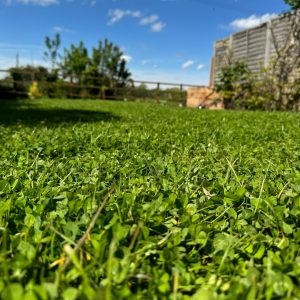
Our Clover Turf is an excellent choice for eco-conscious gardeners and landscapers who want a vibrant yet biodiverse lawn.
This turf is a mixture of small-leaf white clover and grass seed, which are sweet-smelling to attract a range of pollinators. The lucky leaves can also naturally draw nitrogen from the air and convert it into food for the surrounding plants. It’s a turf for all!
Clover Turf is also a low-maintenance option thanks to its deep roots and naturally self-fertilising properties. This means it can survive periods of drought and high levels of shade, while reducing the need for harmful chemical fertilisers.
If you’re looking for a soft, comfortable lawn that not only looks beautiful, but also encourages all kinds of wildlife, choose Clover Turf!
Best use:
|
Of course, laying turf isn’t the only option you have when renovating your lawn. Grass seed is another popular choice, but how does it compare to real grass turf?
We have an entire blog post on the real grass vs grass seed debate, but here’s a brief breakdown below.
| Pros | Cons | |
| Real Grass Turf |
|
|
| Grass Seed |
|
|
For us — and most landscapers across the UK — turf is the go-to, as it provides an instant, lush green lawn that can be enjoyed straight away.
When to Buy Natural Turf
Providing you’ve properly prepared your soil ready for your new turf, and the ground isn’t frozen, you can lay your turf at any time of the year, which means you can buy it at any time of the year.
Our dedicated blog on when is the best time to lay turf, can offer more insights.
It’s best to buy your turf only when you’re ready, though. This is because your soil needs to be fully prepped before it’s installed. Plus, once your turf is out for delivery, it’s all hands on deck.
Because our turf is delivered fresh, it has a short shelf life. This means it needs to arrive at your home or facility at a convenient time so you can begin the installation process straight away.
Speak to our friendly customer service team, who can help book a delivery day and time that suits your project timelines.
While you can come to us to buy turf, we only have a certain amount of ‘spare turf‘ to sell each day, which always sells out. To avoid disappointment, order your turf 24 hours in advance for collection, or secure a date for home delivery.
If you choose home delivery, our drivers can deliver your turf, no matter the amount, directly to your garden or site. As long as there’s adequate access, our Manitou’s can place your order precisely where you need it.
Gardens, sports fields and public facilities come in various shapes and sizes, and the amount of turf you’ll need will reflect this.
We recommend prepping your soil first and measuring the area after.
Once you’ve got your measurements, you can put them into our handy turf calculator to help determine exactly how much turf you’ll need for your project.
The Ultimate Turf Calculator Guide
Because there are many varieties of real grass turf, there isn’t one set price.
There is no right or wrong answer to how much you should spend on your turf. It’s all down to what you’re hoping to get out of the turf, the size of the area, and how much you’ve budgeted for.
Here at George Davis, we have 7 different types of real turf. If you still haven’t decided which turf is right for you, perhaps the price will be the decider.
Below is our 2025 pricing for our real grass turf types:
|
Prices subject to change.
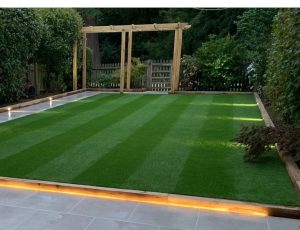
The timing of turf installation plays a crucial role in its successful growth. The ideal time to lay your turf is during the cooler months of autumn or early spring.
These seasons provide optimal growing conditions, allowing the turf to root effectively before facing the stress of summer heat or winter frost.
Having said that, it’s possible to lay your turf at any time of the year, as long as you’ve prepped your soil properly and the ground isn’t frozen.
Read More on the Best Time to Lay Turf
Proper preparation and installation ensure the turf establishes well, resulting in a lush, healthy, and resilient lawn.
Our guide on how to lay turf correctly offers in-depth advice on each step. But here is a short turfing lawn guide for when you begin your project.
|
5 Mistakes to Avoid When Installing Grass Turf
Once your turf rolls have been laid and established, regular mowing, watering, and fertilisation will help maintain a healthy and vibrant lawn.
Proper soil preparation, careful installation, and consistent maintenance contribute to your turf’s long-term health, appearance, and resilience. By following these tips, you can increase the likelihood of a successful turf establishment and enjoy a beautifully vibrant lawn all year round.
We also recommend heading to our General Turf Advice page, where you’ll find lots more information on maintaining your turf lawn.
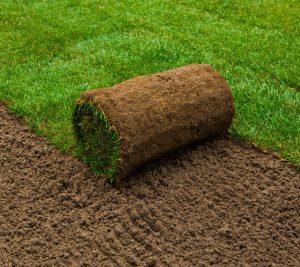
Hopefully, now you have a good idea of what type of real grass turf you want for your commercial site or domestic garden.
Will it be the beautiful Wild Flower Turf? How about the practical Trident Turf? Whatever you think you might choose, we’re more than happy to answer any questions you may have. Either head to our FAQs page or contact us!
We supply over 35,000 domestic and commercial gardens a year with our high-quality turf. We take great pride in our growing process, and we do so with precision, so we can guarantee a lush, vibrant, healthy lawn for years to come.
So, get that soil prepped and order your turf ASAP with George Davis Turf & Stone today! Quick and efficient delivery is guaranteed for immediate installation, so you can enjoy your dream lawn in no time!
Buy the Landscaper’s Choice Turf Rolls Online
How Do I Know What Turf to Buy?
Deciding what turf to choose for your facility, public space, or garden can be challenging. You should start by determining your desired use for the turf — is it for a sports field? Maybe a shady garden?
You’ll then need to assess the soil underneath the area you want the turf to be. What condition is it in? Is it dry? You might need drought-resistant types of garden turf.
You should also take the cost into consideration. What is your budget? Are you looking for standard yet effective, high-quality turf? Or are you looking for a premium option?
Once you’ve answered these questions, check out our guide above and see which turf suits you best.
If you need further assistance, don’t hesitate to contact us!
What Month Should You Lay Turf?
There is a common misconception that turf cannot be laid in the height of summer or throughout the winter. But the reality is quite different.
You can lay your turf at any time throughout the year, as long as the ground isn’t frozen and your soil is adequately prepped.
The best times of year for optimal growing conditions are early spring and late autumn, when the climate is cooler. If you want the best possible outcome for your turf, we recommend laying it during these months!
How Do I Work Out How Much Turf I Need?
This depends on the size of the area you’re looking to cover.
We recommend prepping your soil first and then measuring your space. Then, input those measurements into our handy turf calculator, and we’ll tell you exactly how much turf you’ll need for your project.
Can You Lay New Turf Over Old Turf?
While it is possible to lay new turf over old turf, we highly discourage it. You can read more about this in our blog post, Can You Lay Turf Over Turf?, but essentially, using this method will not give you the optimum results you’re hoping for.
Eventually, your lawn’s condition will deteriorate, and you’ll have to start over again.
How Do You Tell if Turf is Good Quality?
The supplier’s reputation is a good indicator of the quality of the turf they offer. For example, here at George Davis Turf & Stone, we supply over 35,000 gardens with our turf every year.
We take the utmost pride in delivering our fresh living turf, whether it’s for your new-build garden, commercial estate, or sports field.
We have been producing turf for over 30 years, and some of our sports turf has even been supplied to prestigious venues like Chelsea FC, Silverstone Race Circuit, and Centurion Club, so we know a thing or two about good-quality turf.
If you’d like to order some turf from us today, browse our selection, read through our blog post above, or contact us if you have specific questions! Whether you’re looking for 1 roll or 100, we’re always happy to help!